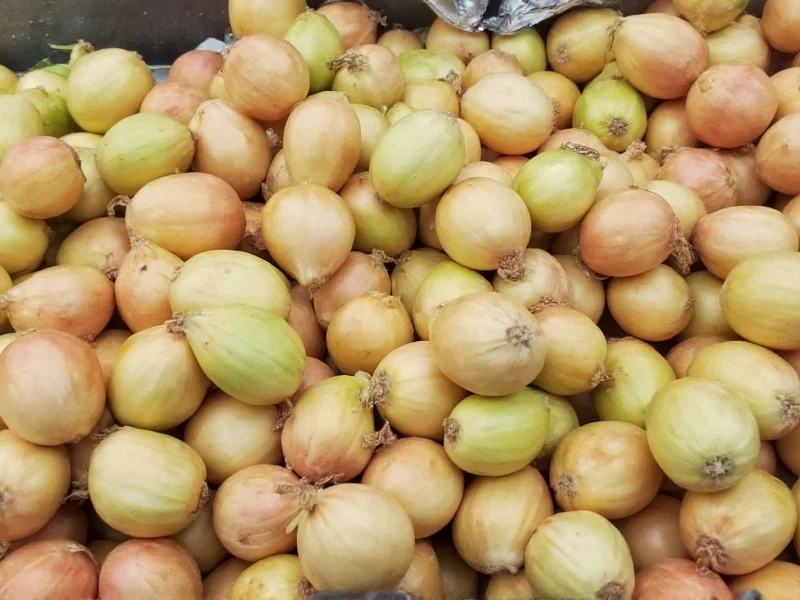Understanding proper shallot storage is essential for maintaining flavor quality and preventing food waste. These delicate alliums have specific storage requirements that differ from other kitchen staples like onions or garlic. Getting storage right ensures you'll have flavorful shallots ready for your culinary creations whenever needed.
Optimal Storage Conditions for Whole Shallots
Shallots thrive in environments that mimic their natural drying and curing conditions. Unlike many vegetables that benefit from refrigeration, whole shallots maintain their quality best at room temperature when stored properly.
The ideal storage conditions include:
- Ambient temperature between 45-55°F (7-13°C)
- Low humidity environment (60-70% relative humidity)
- Excellent air circulation around each bulb
- Complete darkness to prevent sprouting
For most home kitchens, the best storage solution is a mesh bag, wicker basket, or paper bag placed in a cool pantry, basement, or cupboard away from heat sources and direct light. Never store shallots in plastic bags, which trap moisture and accelerate decay.
Shallot Storage Methods Compared
| Storage Method | Shelf Life | Quality Preservation | Best For |
|---|---|---|---|
| Cool, dark pantry (mesh bag) | 4-6 weeks | ★★★★★ | Whole, unpeeled shallots |
| Refrigerator (whole) | 2-3 weeks | ★☆☆☆☆ | Avoid for whole shallots |
| Refrigerator (cut) | 7-10 days | ★★★☆☆ | Peeled or sliced shallots |
| Freezer (chopped) | 6-8 months | ★★★☆☆ | Long-term storage needs |
| Pantry (plastic bag) | 1-2 weeks | ★☆☆☆☆ | Avoid completely |
When Refrigeration Becomes Necessary
While whole shallots should never be refrigerated, there are specific situations where cold storage becomes appropriate:
- Cut or peeled shallots - Once the protective skin is removed, refrigeration in an airtight container becomes essential
- High humidity environments - In tropical climates where pantry storage isn't viable, refrigeration may be the lesser of two evils
- Long-term storage needs - For storage beyond 6 weeks, freezing chopped shallots preserves flavor better than refrigeration
When refrigerating cut shallots, place them in an airtight container with a paper towel to absorb excess moisture. Even with proper storage, refrigerated cut shallots develop off-flavors more quickly than their pantry-stored counterparts.
Signs Your Shallots Have Spoiled
Knowing when shallots have gone bad prevents food waste while ensuring kitchen safety. Watch for these indicators:
- Soft or mushy spots - Indicates advanced decay
- Mold growth - Any visible mold means discard the entire bulb
- Strong unpleasant odor - Fresh shallots have a mild aroma
- Excessive sprouting - While small sprouts can be removed, extensive growth indicates aging
- Darkened or discolored skin - Healthy shallots maintain uniform color
Unlike onions, shallots have thinner skins and higher water content, making them more susceptible to moisture damage. One spoiled shallot can quickly affect others stored nearby, so check your storage regularly and remove any compromised bulbs immediately.
Common Shallot Storage Mistakes
Many home cooks unknowingly shorten their shallots' shelf life through these common errors:
- Storing with potatoes - Potatoes emit moisture and gases that accelerate shallot decay
- Keeping in the original grocery netting - Often too tight, restricting airflow between bulbs
- Washing before storage - Introduces moisture that promotes mold growth
- Storing near heat sources - Countertop placement near stoves or ovens creates unfavorable conditions
- Ignoring humidity levels - High kitchen humidity dramatically reduces shelf life
For optimal results, store shallots separately from other produce in a dedicated storage container that allows airflow while protecting from light.
Extending Shallot Freshness Through Proper Selection
Your storage success begins at the grocery store. Choose shallots that will last longest by looking for:
- Firm bulbs with no soft spots
- Dry, papery skins without moisture or mold
- Intact root ends (avoid those with growing roots)
- Uniform color appropriate to the variety
- No strong odors when sniffing the bulbs
Avoid pre-peeled or packaged shallots, which have already begun the deterioration process. Freshly harvested shallots with their protective skins intact will always store better than those that have been processed.











 浙公网安备
33010002000092号
浙公网安备
33010002000092号 浙B2-20120091-4
浙B2-20120091-4